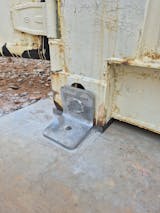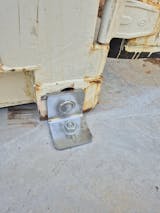
The History and Facts About Shipping Containers
Share
You know, shipping containers are everywhere — on the roads, at ports, in backyards, even turned into homes and cafes. But have you ever stopped to wonder where they came from or how they became such a huge part of our world?
Let’s take a little journey.
Believe it or not, the concept of the shipping container actually dates back to the 1700s. Back then, people used wooden crates to move goods across the seas. It was messy, time-consuming, and pretty inefficient. Then — fast forward to 1956 — an American entrepreneur named Malcolm McLean had a game-changing idea: What if we standardized those boxes and made them from steel?
And just like that, the modern shipping container was born.
That one innovation completely transformed global trade. It cut down loading times, reduced costs, and made it easier to move goods across ships, trains, and trucks. Ever since, containers have become the backbone of how the world moves stuff — and not just in the thousands, but in the millions.
Over time, shipping containers evolved. They became stronger, lighter, more secure. We added smart tech for tracking, built refrigerated containers to keep food and medicine cold, and even designed tunnel containers for faster loading and unloading.
And let’s talk materials. These containers are made from corten steel, which resists rust and stands up to the harshest conditions at sea. Floors are reinforced for weight, and the doors? Virtually impenetrable. It's no wonder they’re trusted to carry everything from bananas to industrial machinery across oceans.
Speaking of bananas — did you know that the biggest cargo ships out there can carry enough containers to hold 745 million bananas? That’s a whole lot of smoothies.
Now here are some quick, fun facts about shipping containers that might surprise you:
- At any given time, around 20 million containers are on the move across the globe.
- 97% of all containers are made in China — they’ve absolutely nailed the production process.
- The standard sizes? 20-foot and 40-foot, 8 feet wide, 8'6" tall. That standardization is what makes the entire system work so seamlessly.
- 90% of the world’s cargo? Yep, it moves inside shipping containers.
- Every year, hundreds of containers fall into the sea — 1,138 in 2024 alone, according to the World Shipping Council.
- Containers float, at least for a while. That’s great for science... but not so great for ships that can’t see them coming.
- Half of all containers are owned by shipping companies, helping them manage logistics more efficiently.
- The average container ship? It can travel over 900,000 miles in a single year — that’s nearly to the moon and back!
And get this — depending on how they’re used, containers can last up to 50 years. That’s a pretty impressive lifespan for a big metal box.
But they’re not just used for shipping. People have gotten creative. One city in Mexico built an entire 48,000 square foot “Container City” out of them — complete with apartments, restaurants, art galleries, you name it.
And then there are the wild stories — like the man in Bangladesh who accidentally got locked inside a container and shipped overseas. Nine days. No food or water. Thankfully, he survived.
So yeah, shipping containers might seem basic, but they’re anything but. They’re the unsung heroes of modern commerce — quietly doing the heavy lifting behind nearly everything we buy, eat, wear, or use.
They’ve transformed how we trade, how we build, and how we think about space. All from a simple idea that’s stood the test of time — a steel box that changed the world.






